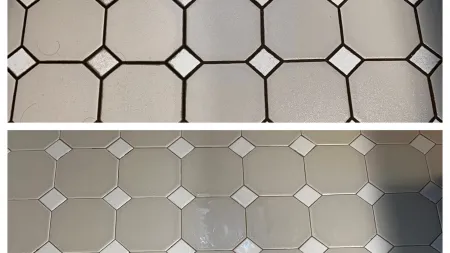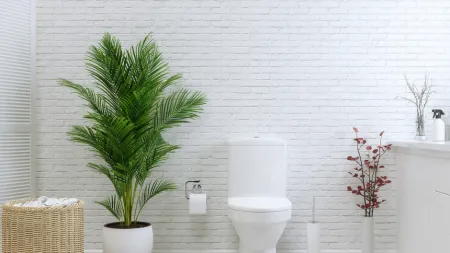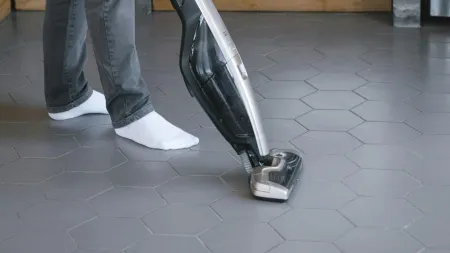The Best Way to Clean Tile Floors: Tips for Every Tile Type
Tile cleaning, especially in the bathroom and kitchen, can be an overwhelming task. You need to know what type of tile you have in your home to determine what method is best for cleaning, what detergent to use, and which tools are recommended.
Correctly cleaning a tile prevents staining and mold growth, extending its life.
Here's the best way to clean a tile floor:
- Remove the loose debris
- Mix detergent and warm water in a mop bucket
- Submerge a cloth or microfiber mop in the solution
- Thoroughly wash the tiles
- Rinse with clean water
- Dry the floor completely
This article guides you through cleaning porcelain, ceramic, linoleum, vinyl, quarry, grout, and other surfaces. Read to the end.
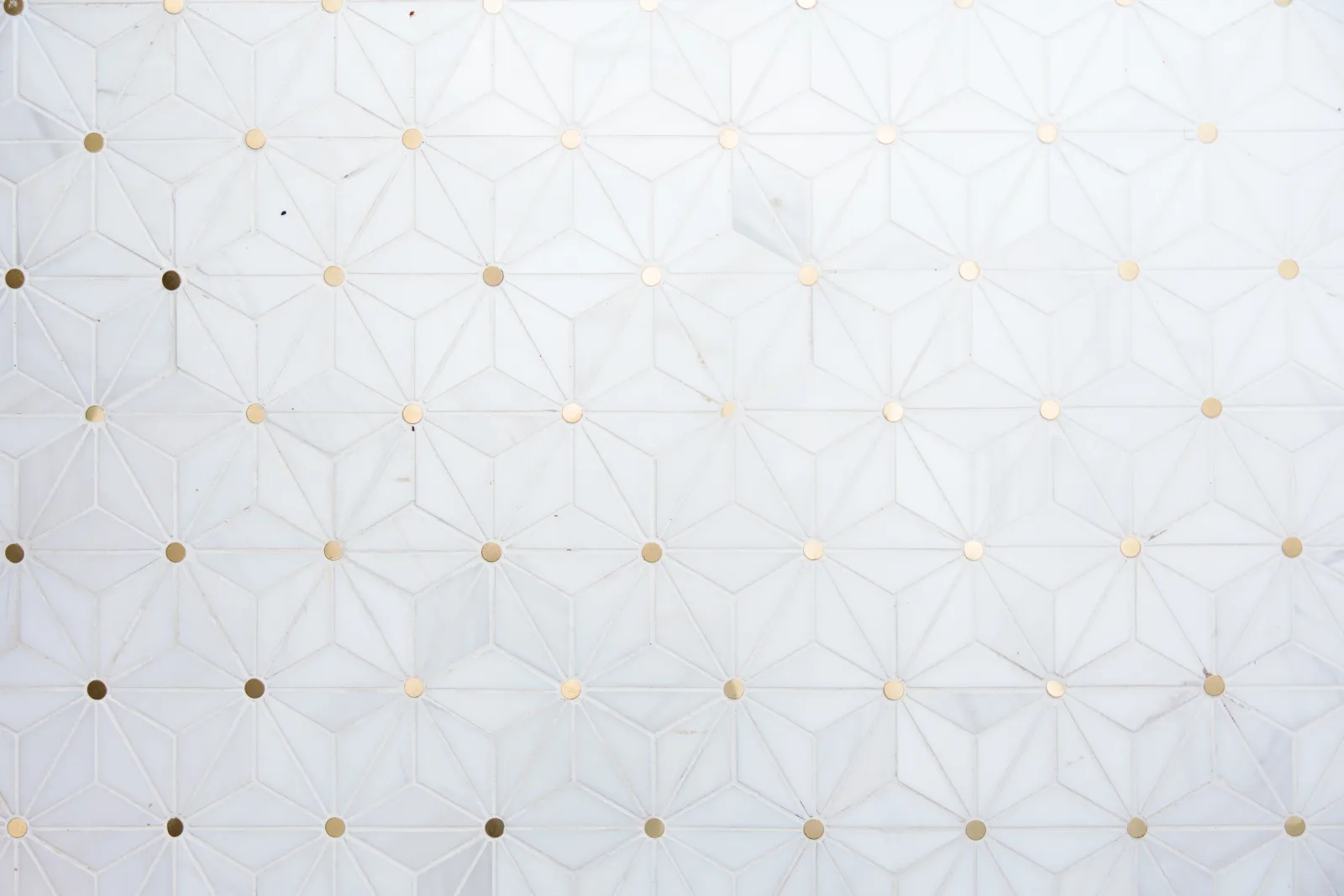
Best Way to Clean a Tile Floor
The best way to clean tiles is to strictly follow their unique care process and use the best cleaning solutions and procedures to enhance their quality and appearance.
Whether you're cleaning a shiny, smooth tile floor or a textured ceramic tile, clean it without damaging it. Delicate tile floors require gentle cleaning solutions and methods.
What You Need to Clean Tile Floors
- Vacuum or soft-bristle broom
- Warm water
- Mild detergent
- White vinegar
- Microfiber mop
- Clean, dry microfiber duster
- Bucket
How to Clean Porcelain and Ceramic Tile Floors
Porcelain and ceramic tile floorings are clay-based and kiln-fired. They're moisture-resistant, durable, and easy to clean.
Ceramic tile and porcelain tile floors can be glazed or unglazed.
Unlike glazed tiles, textured ceramic tile flooring can be challenging, especially if there are stains or spills.
A steam cleaner (without cleaning solutions) can effectively moisten and lift stains and dry spills, leaving the floor spotless and sparkling.
Remove the Loose Debris
Vacuum or sweep the floor to remove dust, dirt, debris, and fur before washing it. Pay more attention to corners and room edges as more dirt and dust hide there. A handheld soft-bristled broom is ideal for such areas.
Mix Detergent and Warm Water in a Mop Bucket
Mix ¼ cup of mild detergent into 1 gallon of warm (or cold) water. Dip a mop or a microfiber cloth into the solution and squeeze the excess liquid.
Clean the floor from one end to the other to ensure every part is clean.
Rinse With Clean Water
Rinse the tiled floor with a mop or microfiber cloth. Change the rinsing water as needed to completely wipe away any leftover cleaning detergent to avoid a sticky tile floor and grout after mopping. Thoroughly rinse the microfiber mop or cloth before wiping any section of your floor. Repeat this process until the tiled floor is sparkling clean.
Dry the Floor
If you're cleaning a glazed floor, use a clean, dry microfiber mop or cloth to dry it completely. This is a great way to prevent water spots and avoid accidental falls associated with a wet floor.
How to Clean Linoleum or Vinyl Tile Floors
Vinyl and linoleum are easy to clean and maintain but very delicate. Don't use scrubbing tools or an abrasive cleaner. Instead, use a microfiber cloth or mop to sweep.
To avoid scratching the floor when vacuuming, use a soft-bristled vacuum attachment or turn the brush roll off if the vacuum doesn't feature a bare floor cleaner with an attachment.
Vinyl can't withstand extreme heat, so don't use super hot water to clean it. Use warm or cold water.
Linoleum, on the other hand, withstands hot water; you can use it.
For vinyl tile floors, follow the same procedure of cleaning porcelain and ceramic floors above. The same applies when cleaning linoleum floors.
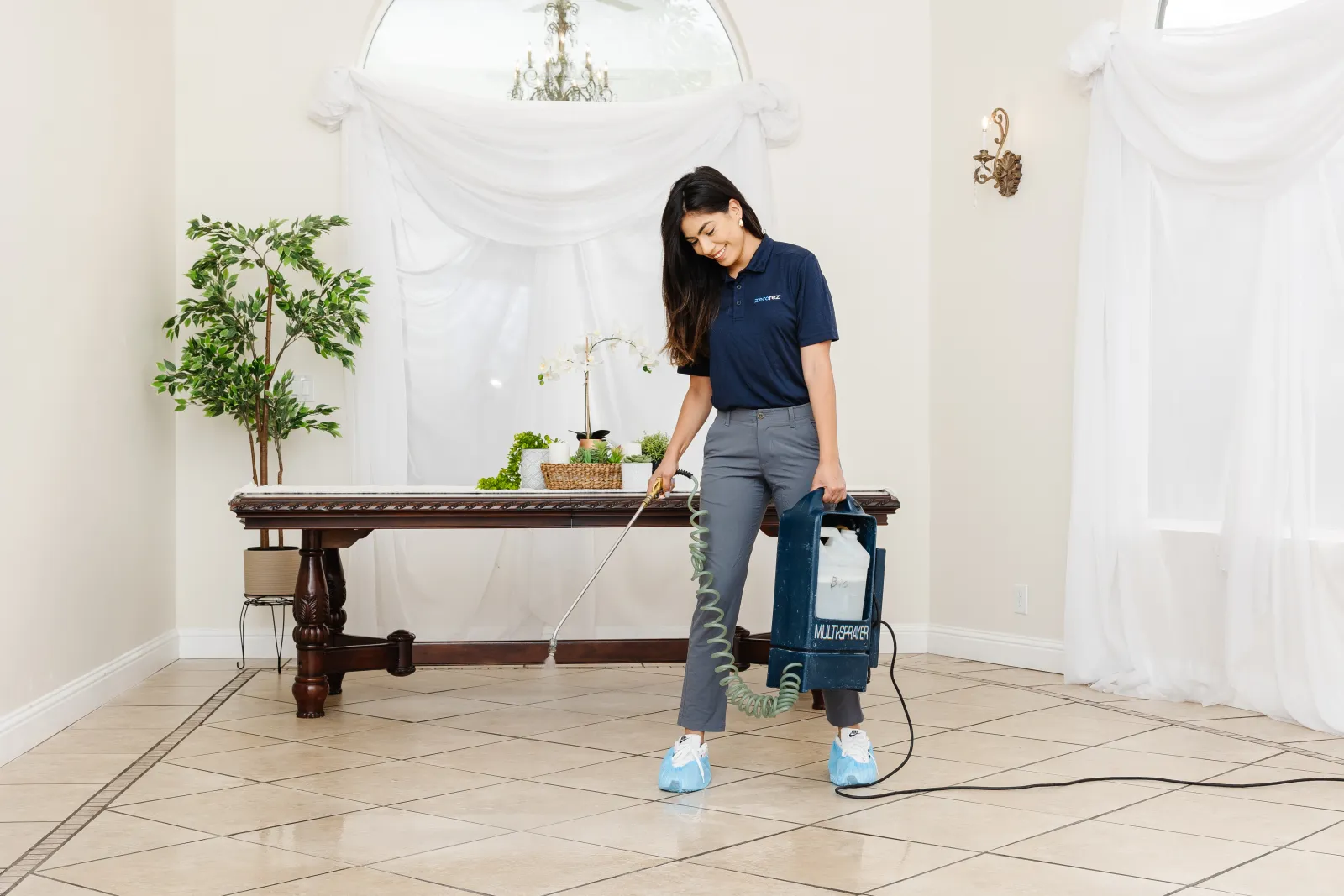
How to Clean Stone Tile Floors
The process of cleaning and maintaining a marble, slate, and granite tile floor is similar to that of porcelain and ceramic tile.
Here's what you must know when cleaning stone tile floors:
- Never use ammonia-based, abrasive, or acidic cleaners, including vinegar and lemon juice, when cleaning stone tiles. They can damage the tiles.
- Don't use hard-bristled brooms or vacuums. They scratch the floor. Use a microfiber cloth or mop to clean.
- Water and pH-neutral products are gentle on stone-tiled floors. They don't damage or cause discoloration.
How to Clean Quarry Tile Floors
The Quarry tiled floor is made of natural clay blended with pulverized natural stone. It's later molded and fired at a certain temperature to make it harder and more water-resistant than terra cotta tiled floors.
For routine cleaning, wipe spills soon after they occur and use thinner to remove grease stains. When cleaning stone tiles, use a heavy-duty wet mop, such as a synthetic mop (the best), tube mop head, microfiber mop, or looped-ends knit mop.
Follow these steps to clean your quarry tile floors:
- Vacuum or Sweep the Floor. Use a vacuum or a standard broom to remove loose debris from the floor.
- Wash the Floor. Avoid basic and acidic cleaning solutions. To clean a quarry floor, use a pH-neutral cleaning solution and warm water. Dampen the mop with the solution and run it over the tiles. Clean from one end to the other to ensure no section is untouched.
- Rinse and Dry. Use clean, warm water to rinse the floor thoroughly. Not effectively rinsing the floor could cause damage. A dry rag or mop is ideal for thoroughly drying the floor after cleaning. Water residue causes mold growth, damaging your floor or making it slippery and dangerous to walk on.
FAQs
How Do You Keep Tile Floors Clean Between Washes?
To keep your home clean between washes:
- Vacuum your home often.
- Wipe spills as soon as they occur; some are hard to deal with after drying.
- Take off your shoes before entering the house
- Use door mats to reduce the dust, dirt, and debris that enter your home through your feet or shoes.
How Often Should You Clean Tile Floors?
Your home traffic and daily household activities determine how often you clean your tiled floors. High-traffic and busy homes need sweeping or vacuuming often, while low-traffic homes require sweeping or vacuuming twice a week.
Dry clean (vacuuming or sweeping) your floor at least twice weekly to remove gritty debris that dulls the tiles' finishing.
Wet clean floors in kitchen once every 14 days or more if need be.
For the tile floors in bathrooms, mop once a week. Better still, hire a professional to clean your shower tile floor because contaminants such as mold tend to build up there. It's important to deep clean the grout every 2 to 3 months.
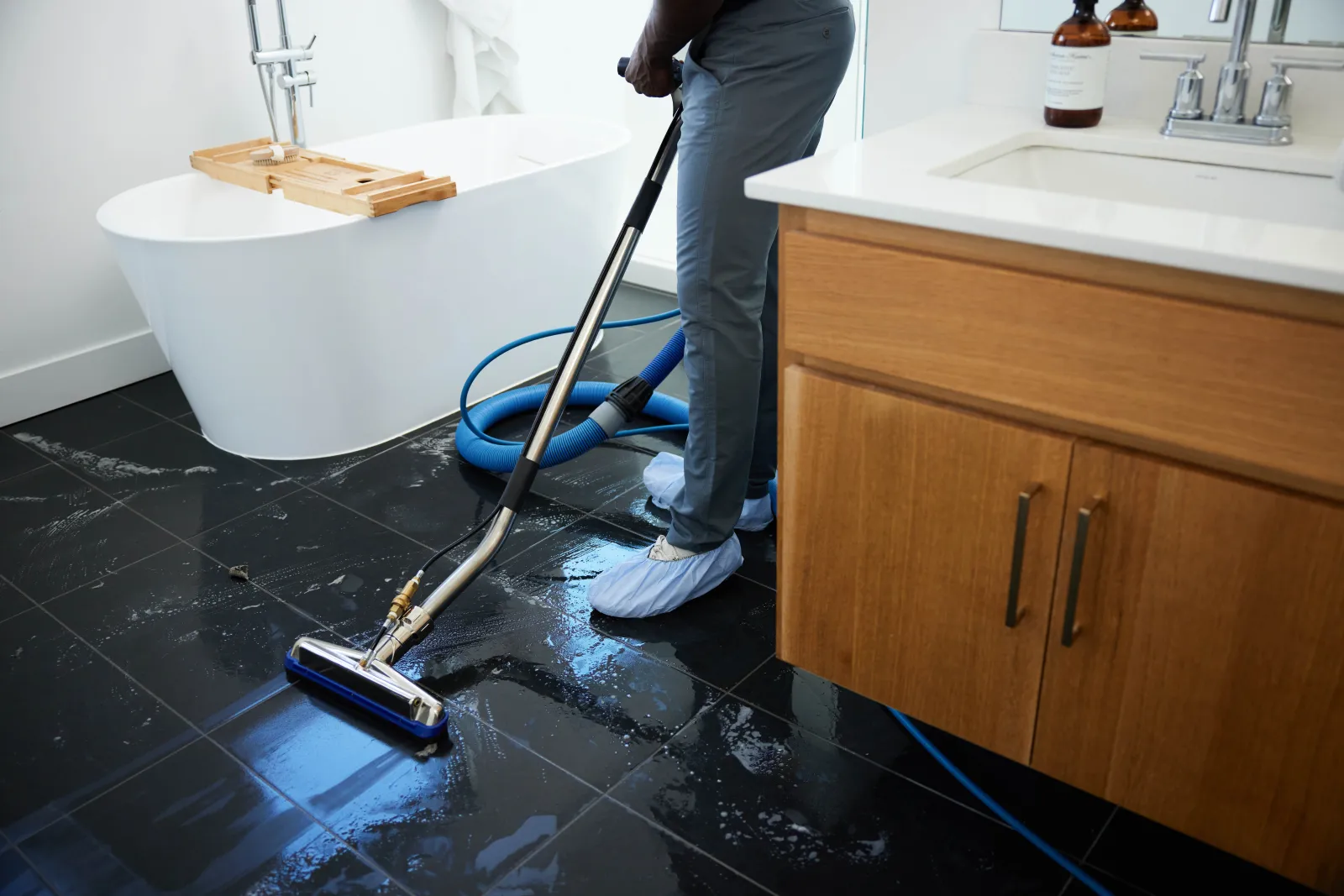
What Are the Best Cleaning Products for Cleaning Tile?
As discussed in this write-up, a pH-neutral cleaner is best for most tiles. You can also use orange oil or diluted white vinegar.
Choose the cleaning solution based on the type of floor you're cleaning (see above).
For professional tile cleaning, a steam cleaner like the one used by Zerorez® is the best. These experts don't use harsh cleaning solutions that could damage tiles; they use hot water to clean them.
Will Vinegar Damage a Tile?
Vinegar is acidic. It can clean ceramic, porcelain, and saltillo tiles, effectively removing stains and grime. Don't use it on marble, terra cotta, or marble-tiled floors, as they could be damaged. Use a pH-neutral cleaning solution for the latter.
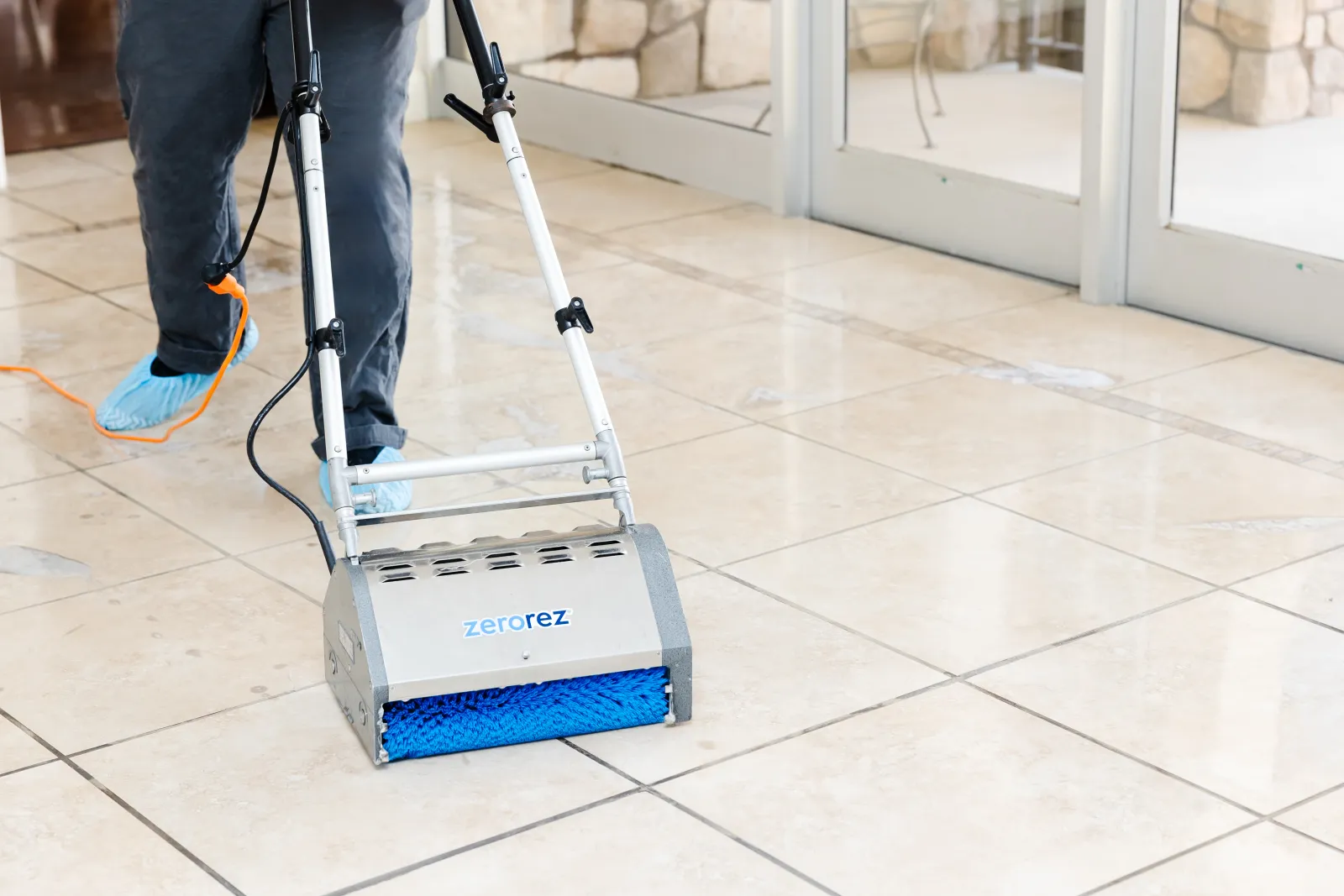
How to Clean Tile Floor Grout
It makes no sense to deep-clean tiles and leave your grout dirty. Tile deep cleaning should includes grout cleaning.
Mix ¼ cup baking soda with one gallon of water and apply it to the grout. Allow the solution to sit for about 15 minutes to break down the grime and dirt before scrubbing using a toothbrush or tile brush.
After scrubbing, rinse it with clean, plain water to remove all the solution to avoid damaging your floor. Drying the grout prevents staining.
Professionally Deep Clean Your Tile Floor
Hire Zerorez to ensure your home or office tiles are sparkling clean and stains-free. We're the experts in cleaning new and old tile floors, glazed and unglazed floors, and colored or white tile floors.
Reach out to us today or schedule any tile cleaning service online.
